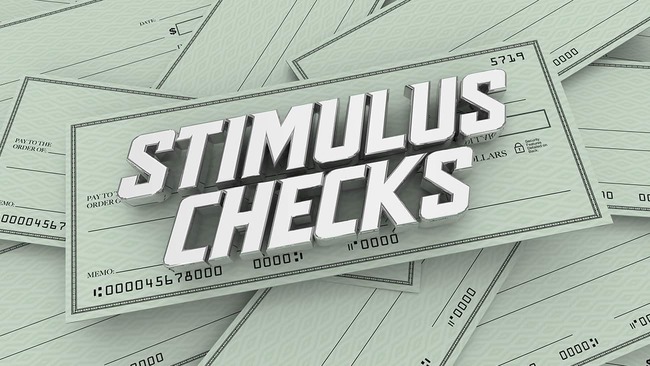Stimulus Checks: When You’ll Get Yours and What to Do With It

As the coronavirus (COVID-19) continues to impact daily life, many people are wondering when they might get some help. One look at unemployment numbers will tell you that more than 10 million jobless claims have been filed in the last three weeks. Couple that with the extended stay-at-home orders and it’s easy to see why we’re facing such difficult times as a country.
There is good news, though. The US government will be sending out direct payments to those who qualify in an effort to bolster the economy. Here’s what you should know about these stimulus checks, as well as tips on what to do with yours.
How to get a stimulus check
The Coronavirus Aid, Relief, and Economic Security Act (CARES) will put $300 billion into the hands of Americans. So what can you do to ensure that you receive a direct payment from the government? In most cases, recipients won’t have to do a thing.
The first round of payments is slated to go out shortly for those who already have their direct deposit information on file with the Internal Revenue Service. There is discussion about the government creating an online portal that would allow people to set up an electronic payment so they could get their money faster. Otherwise, you can expect to receive a paper check by mail if the IRS doesn’t have this information on hand.
There’s no need to sign up for or request your check. Per the IRS, the federal government will automatically send payments electronically or by mail to those who qualify.
A few other things worth noting:
-
Those who aren’t normally required to file a tax return, such as senior citizens and low-income taxpayers, must file a simple tax return in order to receive payment.
-
Social Security beneficiaries, on the other hand, will receive their funds automatically.
How much money you’ll get
“How much is the stimulus check?” It’s a question that many Americans will ask in the coming weeks. Just know the amount of money you see depends on a number of factors.
First things first: Someone who filed taxes in 2018 or 2019 would receive a direct payment of $1,200. This person would then get an additional $500 for each child. If you do the math, the check for a family of four (two adults and two children) totals $3,400.
Amounts change once we account for income limits. The coronavirus stimulus is designed so that full aid goes to those who need it most. It’s why adjusted gross income limits were set at $75,000 for individuals; $112,500 for the head of household; and $150,000 for married couples filing jointly.
This isn’t to say that Americans who make more than these limits won’t receive a check. However, if you fall into this category, your check amount will be $5 less for every $100 that your income goes over the limit. Taxpayers who earn more than $99,000 as an individual or $198,000 as a couple aren’t eligible for a stimulus check.
When yours may arrive
Perhaps you’re in need of financial assistance right now. Whether you were laid off, furloughed, or think your hours may be cut in the near future, you’re looking to obtain cash fast. So when can you expect your stimulus money to appear?
According to MSN, the IRS “will begin making about 60 million direct deposit payments in mid-April to the people who have bank account information on file with the agency.” Treasury Secretary Steven Mnuchin went on to say that direct deposit funds could be available as soon as the week of April 13. It’s anticipated that the electronic payments will take about three weeks to process.
Unfortunately, those receiving paper checks will have to be a bit more patient. While the IRS plans to send 5 million checks a week starting in early May, the final round of checks may not go out until September. That said, taxpayers with the lowest income will be prioritized first.
What to do with your stimulus check
Your financial situation may be a lot different this time next month, or even this time next week. That’s why we suggest coming up with a plan for what to do with your stimulus check. The last thing you want to do is take a careless approach with these funds and wind up in deeper trouble.
Here are three ways to use your coronavirus stimulus check.
Build your savings account
This is a no-brainer. With things changing seemingly every day, a well-padded savings account can help your family weather the storm until it passes. Consider putting your entire payment directly into your savings and see if you have enough funds to cover at least three months' worth of expenses.
Pay down debt
Maybe you’re already comfortable with the amount of money you have in your savings account. If that’s the case, now might be a good time to pay down high-interest debt. Paying down outstanding balances is just one of the ways you can improve your credit score.
Refinance your mortgage
Looking to cut costs wherever possible? A mortgage refinance allows you to lower your rate and save up to $1,000 a month. Your stimulus check could help you cover the closing costs of a refinance.




